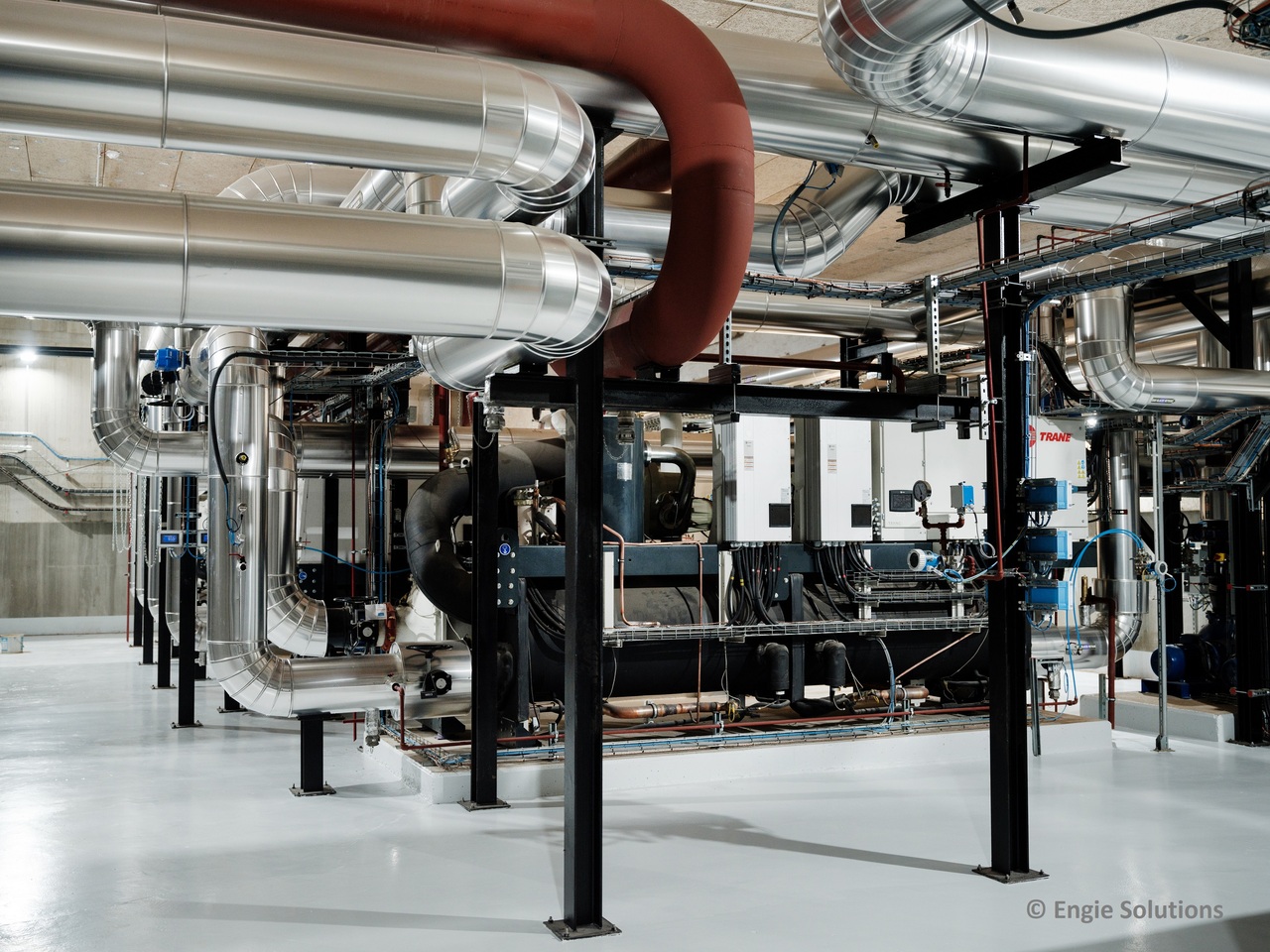Recent geothermal energy-based district cooling projects
In December 2023, district cooling projects using geothermal energy were launched in France and the United Arab Emirates.
The UAE inaugurates geothermal energy-based district cooling
Air conditioning accounts for up to 70% of total electricity consumption in the residential and commercial sectors in the MENA (Middle East and North Africa) region. [1] District cooling offers an energy-efficient alternative, and currently represents 15 to 25% of the total cooling capacity installed in the Gulf region. [2]
In December 2023, the UAE started the operational phase of the G2COOL project, the first district cooling project in the Gulf Region to use geothermal energy. [3]
Two geothermal wells at the G2COOL cooling plant provide naturally occurring hot water at a temperature above 90°C and a flow rate of approximately 100 L/s. The hot water is fed into absorption chillers to produce chilled water, which then serves the district cooling network being tested in Masdar City, Abu Dhabi.
For more information on absorption chillers, read this review article presented at ICR 2023: Commercial sorption chillers for the valorization of low-temperature renewable heat sources: technical review.
Geothermal district cooling and heating network for the 2024 Summer Olympics in France

In Europe, district heating is more common than district cooling, and there are close to 400 geothermal district heating systems currently in operation in Europe. [4] However, with rising summer temperatures, demand for air conditioning has steadily increased. There were 150 district cooling networks installed in 2021 in Europe. [5]
On 22 December 2023, a geothermal power station was commissioned in Saint-Denis, France. The plant will be used to supply the district heating and cooling network to which the Olympic Village and almost 600,000 m² of buildings in the Pleyel district of Saint-Denis will be connected. [6]
The underground water, drawn at 14°C at 70 m depth, will first be transferred to double-effect heat pumps located in the operations building, then transported to supply heating, domestic hot water and cooling to the buildings connected to the network.
A 10-kilometre network will supply heating and cooling at a capacity of 4 MW and 2 MW respectively. [7] This district heating and cooling network is expected to prevent the emission of 4,747 tonnes of CO2 every year.
For more information on ground-source heat pumps, read this review article from the IJR: Progress in ground-source heat pumps using natural refrigerants.
Sources
[1] https://www.coolupprogramme.org/knowledge-base/snapshots/cooling-in-the-mena-region-and-turkiye/
[2] Alotaibi, S., & Alhuyi Nazari, M. (2023). District cooling in the Middle East & North Africa; history, current status, and future opportunities. Journal of Building Engineering, 77, 107522. https://doi.org/10.1016/j.jobe.2023.107522
[4] EGEC Geothermal market report. July 2023. https://www.egec.org/wp-content/uploads/2023/05/EGEC-Market-Report-2022_Key-Findings.pdf
[5] Euroheat & Power (EHP). (2023). DHC Market Outlook 2023. https://www.euroheat.org/data-insights/outlooks/market-outlook-2023
[6] Engie. 19/12/2023 https://www.engie-solutions.com/fr/presse/geothermie-pleyel
[7] Syndicat mixte des réseaux d’énergie calorifique. (SMIREC) https://www.smirec.fr/assets/files/Autre/Plaquette%20Projet%20Pleyel%20.pdf
Source of the pictures: Engie Solutions
